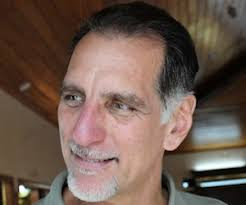These days of “humanitarian corridors” take me back to the end of August 1994, when the first signs emerged that the Brothers to the Rescue boat had begun to leak. In that triumphant yet self-deceptive spirit that has always accompanied Plattism, moderation has never been a virtue. By then and little by little, in abeyance of sanity, the charitable brothers of our history had been yanking at the chain obsessively until they drove themselves mad.
It all began as an admittedly brilliant psychological warfare campaign in which the illegal departures and the tragedy of the rafters offered the perfect hook. It was impossible not to be moved by images of migrants being rescued in the face of death.
Money flowed and the organization fed on many splendid, fat cash cows until the smoke reached the heads of the founding fathers, and they assessed the moment when the harsh reality of life in Cuba – whose deterioration they had always applauded – would be combined with their messages to the “brothers of the island”, to provoke the social explosion in Cuba that they had always dreamt of. They had concluded, as some do now, that they had us where they wanted us. Like some now, they believed it was their time.
And they almost made it, or so they thought. It was a difficult start to the year, the Cuban economy had bottomed out and the president of Brothers to the Rescue thought it was the right time to ramp up the pressure. On April 17, we took off from Opalocka to carry out the first publicized invasion of Havana’s airspace, with the launch of flares and smoke bombs in front of the Malecón, in a squad made up of FAR deserters, anti-Castro veterans, and what are now called “embedded journalists”, with the social mission of competing with each other to see who could best sell their irresponsible and illegal foolery in the news market of La Sagüecera.
The months that followed were really tumultuous and hard, for the Cuban people and for those of us there in the US who racked our brains to find ways to protect our people from the “humanitarian” spirit of brothers like these.
The tragedy of the tugboats occurred between 13 March to mid-July 1994 and by July the Polargo 5 tugboat had been hijacked and brought to Florida, and on 5 August a crowd had been manipulated into acts of vandalism on the Malecón.
Euphoria consumed the anti-Castro atmosphere in Miami. Each misfortune was received with poorly concealed relish as if every life lost at sea was a triumph, and amidst all that merriment, all kinds of atrocities began to be attributed to the Cuban government. The Miami media soon regurgitated the misinformation that FAR helicopters were hunting rafters, loaded with sandbags, and those who had the misfortune of being discovered were sunk by cargo dropped from the aircraft. The gutter press amplified the roars of indignation for several days, so that “representatives of the community” discharged their humanitarian sentiments in the most absolute condemnation of the excesses of Castroism.
Then what had to happen happened. It never ceased to amaze me that, blinded by their revelry, they did not see it coming. On August 13, the Cuban government withdrew protection from the coasts an exodus of rafters ensued. Six days later, Bill Clinton ordered the interception and transfer to the Guantanamo naval base of those who were picked up at sea.
Now the attacks on the Cuban government were for letting the rafters out. Those who had defended the right of rafters to live in freedom just one day previously, now claimed to the US government that those same rafters were a threat to national security. It was in this atmosphere, of demands that the Yankee government retaliate against Cuba for the “ferry boat” aggression that the US was purportedly subjected to, that the flight took place that last Saturday in August 1994, and I so return to the beginning of this story.
The sight that awaited us at the 24th Parallel was chaotic. Dozens of US government vessels of all kinds, surrounded by hundreds of rafts, filled the sea all the way to the horizon and they seemed to be unable to cope. We flitted aimlessly and without direction from one raft to another, pausing in bewilderment several times, overwhelmed by the sheer density of people per square mile.
The return flight was carried out in a gloomy silence until arriving at a hangar engulfed by grief, in which each one of us solemnly gathered his things and left without barely saying goodbye. Ultimately, the lack of retaliatory action from the US government and the experience of that flight had made the founding fathers of Brothers to the Rescue realize that it was not the Cuban Revolution whose time had passed but theirs.
The following Monday, as usual, I arrived early for my job at the International Flight Center at Kendal Tamiami Airport. A small group of pilots had formed at the entrance and the conversation turned to the topic of the day: how had Castro had gotten away with it, attacking the United States again, without Bill Clinton having the balls to respond militarily? The recycling of frustrations gave a way to passions.
It was then that F.F. (former CIA agent, a mercenary from the Congo, Somocista and double exile, first from Cuba and then from Nicaragua) exploded:
“Fucking rafters! They make me want to go out with a plane loaded with ammunition and sink rafts until I run out of bullets!”
And there I leave it. Think about it well, those of you who wish to believe that these people love us.



